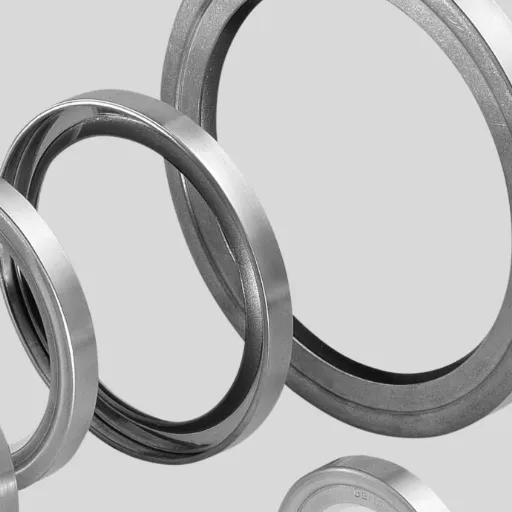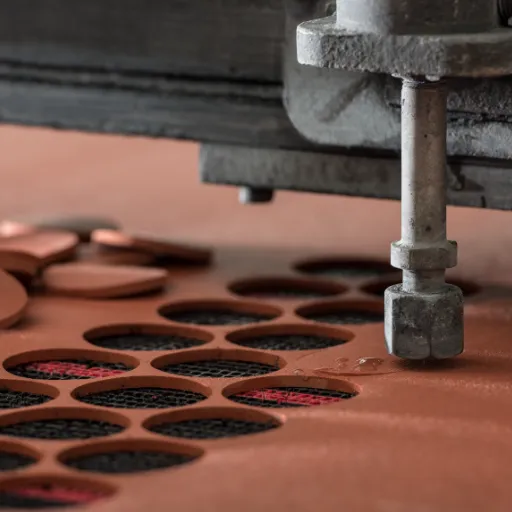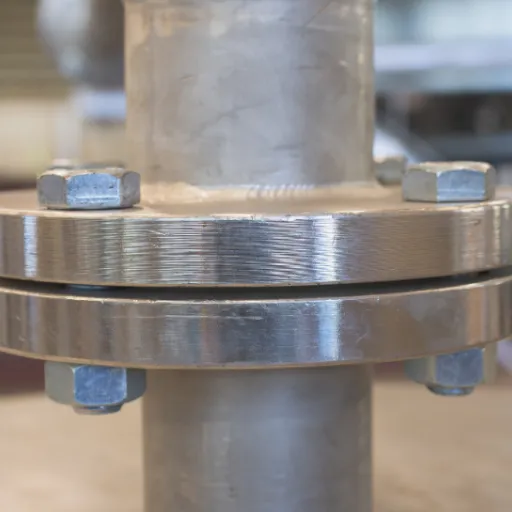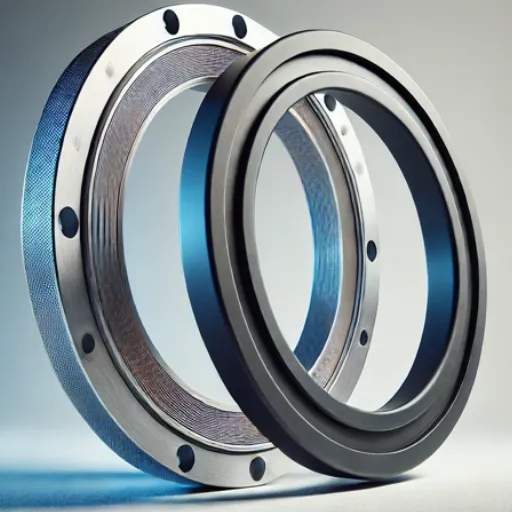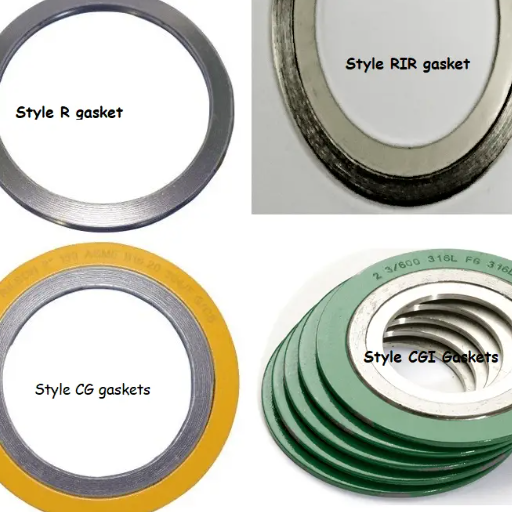When building machinery or fastening components, the choice of hardware could have a significant bearing on performance, durability, and ease of operation. Because of their distinct design, flange nuts serve several applications, but one frequently asked question is whether they need washers. This article takes a deep dive into the flange nuts’ operation and advantages and whether washers are needed and how these nuts ease various projects in different industries.
Introduction to Flange Nuts

The term flange nut designates a nut having a wide flange at one end that acts as an integrated washer. The flange distributes the load of the fastener over a larger area, thus eliminating the need for a separate washer in most cases. The flange also prevents loosening due to vibration, thus making them useful for the fasteners of components that would otherwise come loose.
What is a Flange Nut?
A flange nut is a fastener custom-made with an integrated flange, the circular base extending out from the bottom of the nut. This flange acts as a washer wherein it distributes the force being applied by the nut so as to avoid excessive damage to the material being fastened.
Key Characteristics of Flange Nuts:
- Materials: Manufactured generally from stainless steel, carbon steel, or brass
- Reliability: Appreciated for their dependability and versatility
- Applications: Automotive, construction, and machinery assembly
- Vibration Resistance: Integrated flange increases resistance to loosening due to vibrations
- High-Torque Advantage: Offers advantages in high-torque situations
Types of Flange Nuts: Serrated vs. Non-Serrated
| Feature | Serrated Flange Nuts | Non-Serrated Flange Nuts |
|---|---|---|
| Design | Ridges or serrations underneath flange | Smooth flange bottom |
| Grip | Firmly grips mating surface | Even pressure distribution |
| Vibration Resistance | Excellent – limits loosening | Good but less than serrated |
| Surface Impact | May damage surface finishes | Minimal surface damage |
| Reusability | Limited due to surface grip | High – suitable for multiple uses |
| Best Applications | Automotive engines, heavy machinery | Furniture, household appliances, light-duty |
Serrated Flange Nuts
Serrated flange nuts feature ridges or serrations underneath their flange that firmly grip the mating surface, hence limiting and resisting loosening due to vibration. These are ideal for:
- High-vibration environments
- Automotive engines
- Heavy machinery applications
- Applications where hold-ability is critical
Non-Serrated Flange Nuts
Non-serrated flange nuts feature a smooth flange that evenly distributes clamping force across the surface without damaging connected components. They are preferred for:
- Multiple assembly/disassembly requirements
- Finished or delicate materials
- Applications requiring surface preservation
- Aesthetic applications
Applications of Flange Nuts

Flange nuts demonstrate great versatility across various industries due to their integrated washer-like base that provides even pressure distribution and prevents loosening.
Industries Using Serrated Flange Nuts:
- Automotive Manufacturing: Engine components and chassis assembly
- Heavy Machinery: Industrial equipment and construction machinery
- Construction: Structural fastening applications
Industries Using Non-Serrated Flange Nuts:
- Furniture Making: Assembly without surface damage
- Household Appliances: Consumer product assembly
- Light-Duty Installations: General fastening applications
The Role of Washers in Fastening
Washers play a crucial role in fastening systems by providing:
- Load Distribution: Spreads force over a larger area
- Surface Protection: Prevents damage to underlying materials
- Stability Enhancement: Reduces loosening from vibrations
- Even Surface Contact: Provides uniform pressing surface
Types of Washers
| Washer Type | Primary Function | Best Use Cases |
|---|---|---|
| Flat Washers | Load distribution and surface protection | General applications, surface protection |
| Spring Washers (Split) | Continuous tension to prevent loosening | High-vibration environments |
| Locking Washers | Secure fasteners in critical applications | High-vibration or critical applications |
Do Flange Nuts Really Need Washers?

Short Answer: In most applications, flange nuts do NOT require washers due to their integrated flange design that acts as a built-in washer.
When Washers Are NOT Required:
- Standard applications with adequate surface strength
- When using serrated flange nuts for vibration resistance
- Metal-to-metal contact with sufficient material strength
- Low-vibration environments with secure connections
When Washers MAY Be Beneficial:
- Soft or Delicate Surfaces: Additional protection for fragile materials
- High-Vibration Applications: Extra stability in extreme conditions
- Painted or Coated Surfaces: Preventing finish damage
- Oversized or Irregular Holes: Better load distribution
Flange Nuts vs. Hex Nuts: A Comparison

| Aspect | Flange Nuts | Hex Nuts |
|---|---|---|
| Built-in Washer | ✓ Integrated flange acts as washer | ✗ Requires separate washer |
| Load Distribution | ✓ Superior due to flange design | Limited without washer |
| Vibration Resistance | ✓ Enhanced resistance | Depends on washer type |
| Assembly Simplicity | ✓ Fewer components needed | Requires additional hardware |
| Versatility | Application-specific | ✓ Universal compatibility |
| Cost | Higher initial cost | ✓ Lower cost, flexible options |
When to Choose Flange Nuts Over Hex Nuts:
- High-vibration or load-bearing conditions
- Need to minimize component count
- Applications requiring quick assembly
- Where integrated washer function is beneficial
When to Choose Hex Nuts Over Flange Nuts:
- Need for adjustability and customization
- Budget-conscious projects
- Applications requiring specific washer types
- Universal compatibility requirements
Performance in Various Applications

Engineering Evaluation Principle: Always examine specific project requirements when selecting fasteners.
Application-Specific Recommendations:
- High-Vibration Settings: Use nylon lock nuts for maintained grip over time
- Frequent Adjustments: Standard hex nuts with appropriate washers for flexibility
- Structural Applications: Flange nuts for integrated load distribution
- Precision Assembly: Consider both fastening requirements and environmental factors
Summary of Key Points
- Flange nuts typically eliminate the need for separate washers due to their integrated flange design
- Serrated flange nuts provide superior vibration resistance but may damage delicate surfaces
- Non-serrated flange nuts offer reusability and surface protection with adequate holding power
- Washers may still be beneficial for soft surfaces, extreme vibration, or aesthetic applications
- Project-specific evaluation is crucial for optimal fastener selection
Final Thoughts on Flange Nuts and Washers
Flange nuts represent an efficient fastening solution that combines the functions of a nut and washer in a single component. Their integrated design provides excellent load distribution and vibration resistance, making them ideal for many applications where structural integrity is paramount. While they can often eliminate the need for separate washers, careful consideration of specific application requirements will ensure optimal performance and longevity.
References
-
EML2322L Fastener Reference Guide
University of Florida – Fastener Reference Guide
This guide provides detailed information on fasteners, including the use of washers and nuts. -
Specification for Structural Joints Using High-Strength Bolts
Purdue University – Structural Joints Specification
Discusses the requirements for bolts, washers, and nuts in structural applications. -
Fastener Design Manual (NASA)
NASA – Fastener Design Manual
Explains the design and application of fasteners, including the role of washers and nuts. - Top Flange Nut Suppliers in China
Frequently Asked Questions (FAQ)
Do Flange Nuts Work Without Washers?
Flange nuts can often be used without washers, but whether or not you need one depends on the application. The serrations on the flange are designed to bite into the material, providing a larger bearing surface and reducing the chance of slippage. In applications with an uneven fastening surface or oversized holes, using a washer may help distribute the load more evenly and prevent damage to the material underneath. However, flange nuts work effectively in many scenarios without additional hardware, especially in situations where the torque applied is sufficient to hold the fastener securely. It’s important to consider the manufacturer’s specifications and the type of nut being used when making this decision.
Can Flange Nuts Eliminate the Need for Washers?
Yes, flange nuts can eliminate the need for washers in many cases due to their unique design. The protruding rim and serrated edges of a flange nut create a larger contact surface, which helps to distribute the load and can prevent loosening from vibration. This feature is particularly useful in applications where moisture could be an issue, as it helps maintain a tighter grip on the material. However, in some cases, such as when dealing with painted or coated surfaces, using a washer might still be advisable to prevent gouging or maring of the finish. Ultimately, the choice to use a washer should be based on the specific requirements of the fastening solution.
How Do Serrated Flange Nuts Work?
Serrated flange nuts work by utilizing their uniquely designed flange that incorporates serrations, which provide additional grip and stability. When torqued onto a bolt, these serrations bite into the mating surface, creating friction that helps prevent the nut from loosening over time. This design is beneficial in applications subject to vibration or dynamic loads, as it reduces the risk of the nut loosening. Additionally, the flange acts as a washer, helping to distribute the load over a larger area, which can be particularly advantageous in scenarios involving oversized or irregularly shaped holes. It’s important to ensure that the flange nut is matched correctly with the bolt type to maximize its effectiveness.
What Type of Nut Should Be Used with Flange Bolts?
When using flange bolts, it is generally recommended to pair them with flange nuts for optimal performance. Flange nuts are specifically designed to complement the characteristics of flange bolts, providing a secure fastening solution. The combination of these two fasteners enhances the load distribution due to the flange and serrated design, which is particularly useful in applications requiring a high degree of reliability. Using a standard hex nut may not provide the same level of stability and grip, especially in high-torque applications. Therefore, it is advisable to use a flange nut that matches the specifications of your flange bolt to ensure effective engagement and performance.
Do Hex Nuts Work with Flange Nuts?
Hex nuts can technically be used in conjunction with flange nuts, but it is not a common practice. Flange nuts are designed to provide a specific advantage in load distribution and grip due to their flange and serrated edges, which hex nuts lack. Using both together may lead to discrepancies in torque and fastening effectiveness, as the hex nut does not offer the same bearing surface benefits. In applications where vibration or movement is an issue, sticking with flange nuts alone is typically the better choice to ensure a secure and stable connection. Always consider the specific requirements of your project and the manufacturer’s recommendations when selecting nuts.
When Should You Use Washers with Flange Nuts?
While flange nuts are often effective on their own, there are situations where using washers is advisable. If the contact surface is uneven or potentially prone to damage, a washer can help protect the material beneath and provide a more stable fastening point. In cases where moisture could be an issue, adding a washer can also help reduce the risk of corrosion by creating a barrier between the nut and the material. Furthermore, when dealing with oversized or irregularly shaped holes, washers can help distribute the load more evenly, ensuring that the flange nut functions effectively. It’s important to evaluate each application carefully to determine whether adding a washer will enhance the fastening solution.

